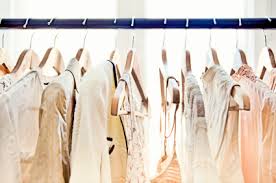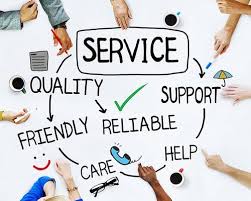Mastering the Art of Selling Clothes and Accessories: A Complete Guide
The fashion industry is vibrant, ever-evolving, and one of the most competitive markets globally. Selling clothes and accessories isn’t just about showcasing beautiful products—it’s about creating a compelling experience for your customers that keeps them coming back. Whether you’re running a boutique, an online store, or a large retail chain, understanding the nuances of selling fashion can make a huge difference to your success.

In this blog, we’ll explore key strategies, insights, and trends to help you master the art of selling clothes and accessories.
1. Understanding Your Target Audience
The first step to successfully selling clothes and accessories is understanding your target audience. Who are they? What do they want? Where do they shop? Answering these questions helps you tailor your products, marketing, and shopping experience to your customers’ preferences.
Key Steps to Define Your Audience:
- Analyze Demographics: Consider age, gender, income level, and lifestyle.
- Understand Trends: Stay updated on fashion trends that appeal to your audience.
- Use Feedback: Gather customer feedback to identify their needs and preferences.
For example, a younger audience might prefer trendy, affordable fashion, while a professional demographic might prioritize quality and timeless styles.
2. Building a Standout Collection
In the crowded fashion market, your collection is your brand’s identity. Offering unique, well-curated clothing and accessories will set you apart from competitors.
How to Curate Your Collection:
- Stay on Trend: Offer a mix of trendy and classic pieces to appeal to diverse tastes.
- Offer Versatility: Stock items that can be styled multiple ways, increasing their value to customers.
- Highlight Accessories: Accessories like bags, belts, and jewelry can enhance your clothing sales by offering complete outfit solutions.
For instance, a boutique selling a summer dress could upsell matching earrings or a stylish hat to create a cohesive look.

3. The Power of Visual Merchandising
Presentation is key when it comes to fashion. How you display your clothes and accessories can significantly impact sales.
In-Store Merchandising Tips:
- Create Themes: Use seasonal or lifestyle themes to group products. For example, “Beach Vibes” with swimsuits, sunglasses, and tote bags.
- Use Mannequins: Showcase styled outfits to inspire customers.
- Optimize Lighting: Proper lighting highlights textures, colors, and details.
Online Merchandising Tips:
- High-Quality Images: Show clothes on models from multiple angles.
- Detailed Descriptions: Include size guides, fabric details, and styling tips.
- Interactive Features: Let customers zoom in or see items in different colors.
4. Leveraging Digital Marketing for Fashion Sales
In today’s digital-first world, a strong online presence is essential for selling clothes and accessories. Use digital marketing strategies to attract and engage your audience.
Key Strategies:
- Social Media Marketing: Platforms like Instagram and Pinterest are perfect for showcasing visually appealing fashion products.
- Influencer Partnerships: Collaborate with influencers to expand your reach and build credibility.
- Email Campaigns: Send newsletters featuring new arrivals, promotions, and styling tips.
- SEO for Online Stores: Optimize your website with keywords like “affordable summer dresses” or “luxury handbags” to improve search rankings.
5. Providing Excellent Customer Service
Great customer service can make or break your reputation in the fashion world. A satisfied customer is more likely to return and recommend your store to others.
Tips for Superior Service:
- Train Your Staff: Equip them with product knowledge to assist customers confidently.
- Offer Personalization: Provide styling suggestions tailored to each customer’s preferences.
- Flexible Policies: Have a clear return and exchange policy to build trust.

6. Using Promotions and Discounts Effectively
Sales and promotions are powerful tools to drive foot traffic and boost revenue, but they need to be well-planned.
Popular Promotions:
- Seasonal Sales: Offer discounts on seasonal items to clear inventory.
- Bundle Deals: Encourage customers to buy more with “buy one, get one” or “complete the look” offers.
- Exclusive Access: Provide early access to new collections for loyal customers or subscribers.
7. Sustainable Fashion: The Growing Trend
Sustainability is becoming a key factor in customer decisions. Offering eco-friendly clothes and accessories not only helps the environment but also attracts conscious shoppers.
How to Incorporate Sustainability:
- Use Ethical Suppliers: Partner with brands and manufacturers committed to fair practices.
- Highlight Eco-Friendly Materials: Promote items made of organic cotton, recycled materials, or vegan leather.
- Educate Customers: Share the story behind your sustainable products to create a deeper connection.
8. Measuring Success and Adapting
Track key performance metrics to understand what’s working and what needs improvement.
Key Metrics:
- Sales Data: Monitor top-selling items and underperformers.
- Customer Feedback: Use reviews and surveys to gather insights.
- Traffic Sources: Analyze where your customers are coming from—social media, email, or direct search.
Use this data to refine your inventory, marketing strategies, and customer experience.
Final Thoughts
Selling clothes and accessories is both an art and a science. By understanding your audience, curating a standout collection, investing in effective marketing, and providing top-notch service, you can create a fashion business that stands out in a competitive market. Whether you’re a small boutique owner or managing an e-commerce platform, these strategies will help you build a loyal customer base and achieve lasting success.
Start implementing these tips today and watch your sales soar!